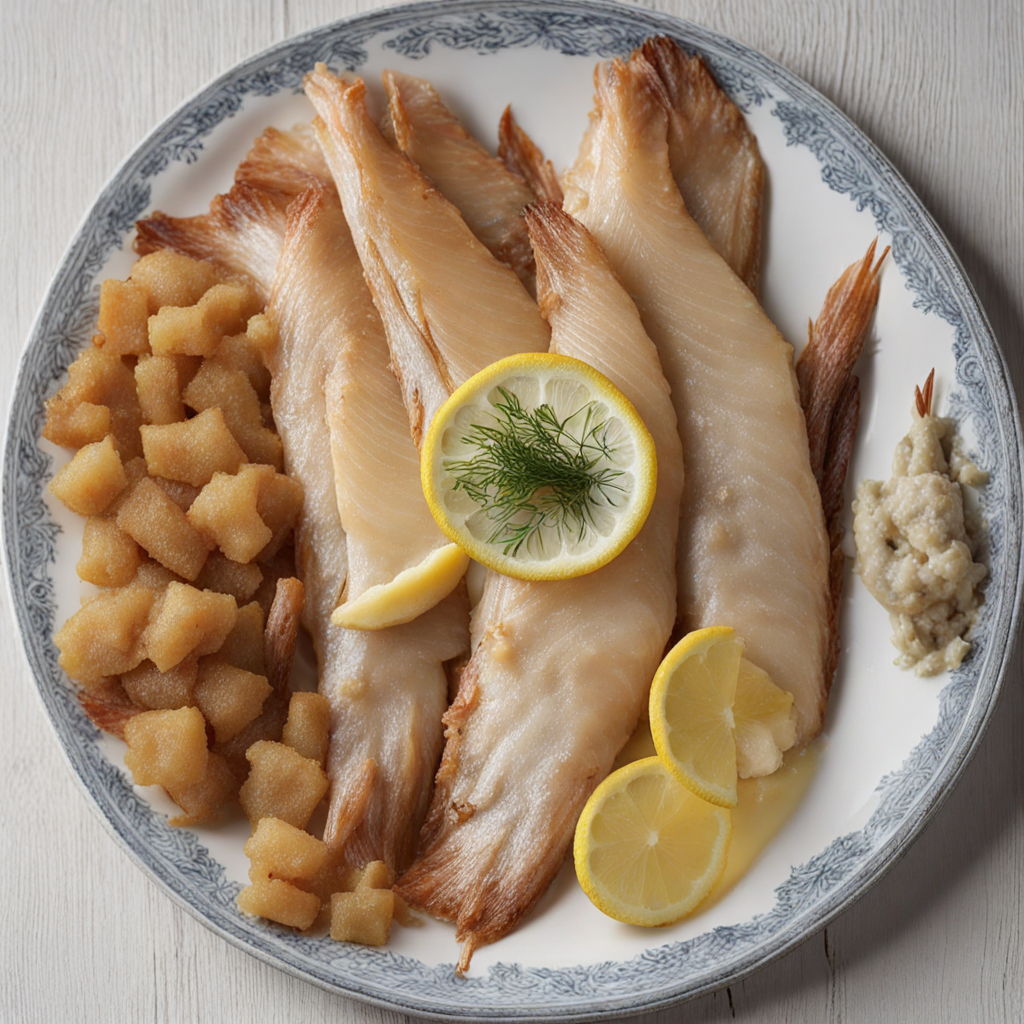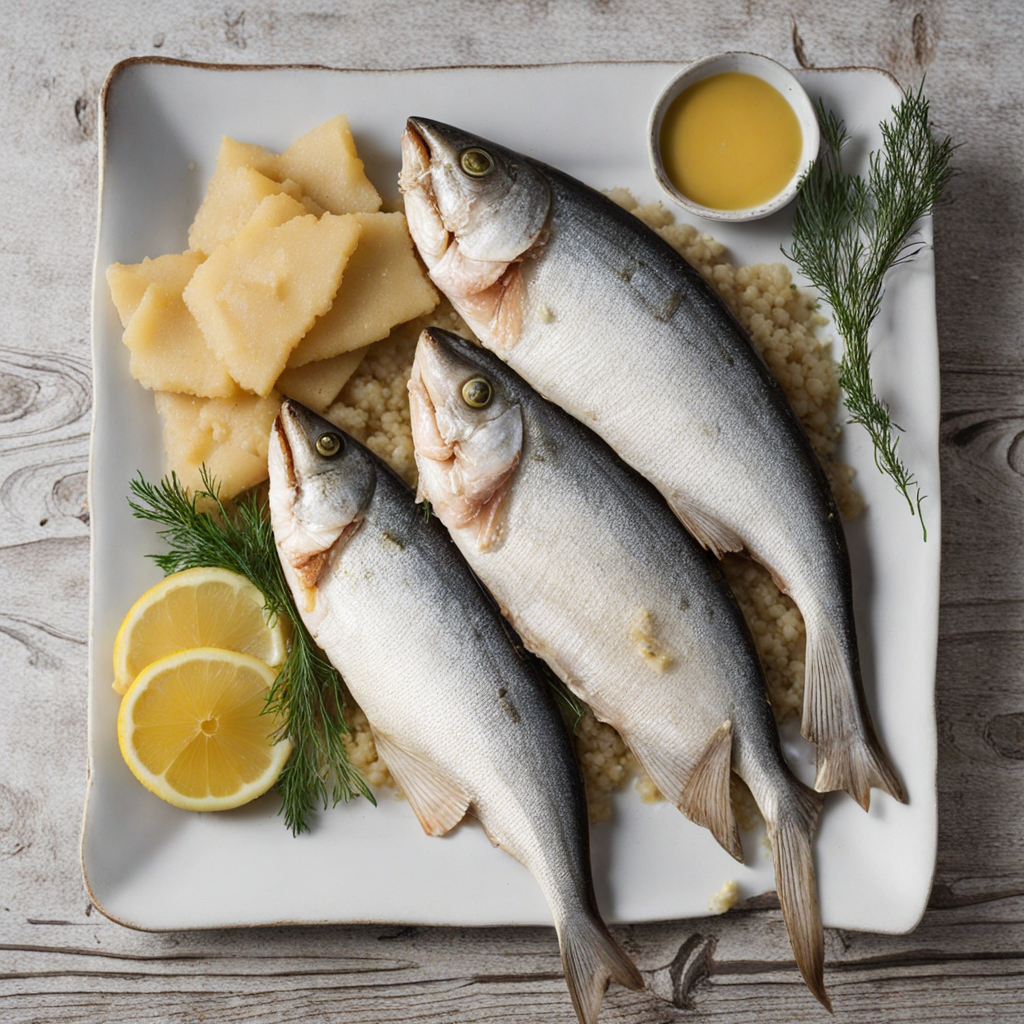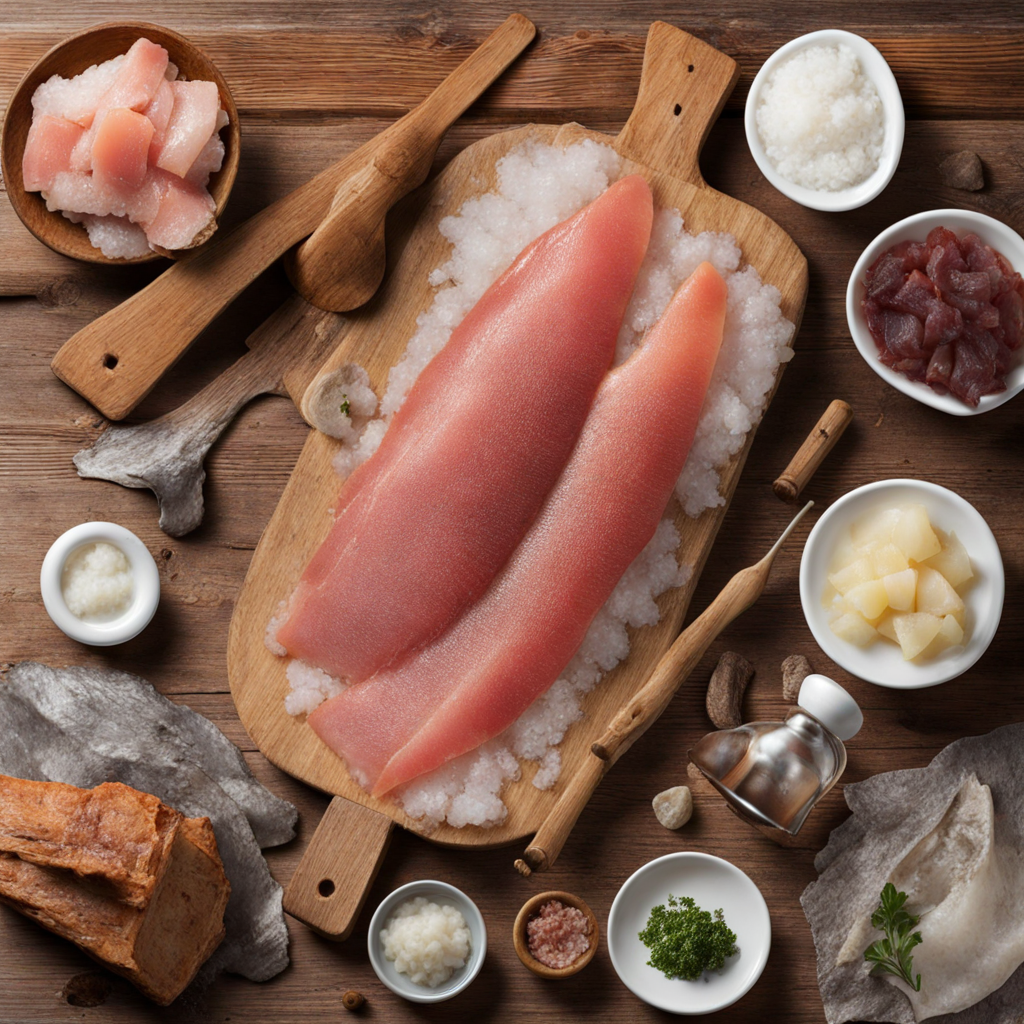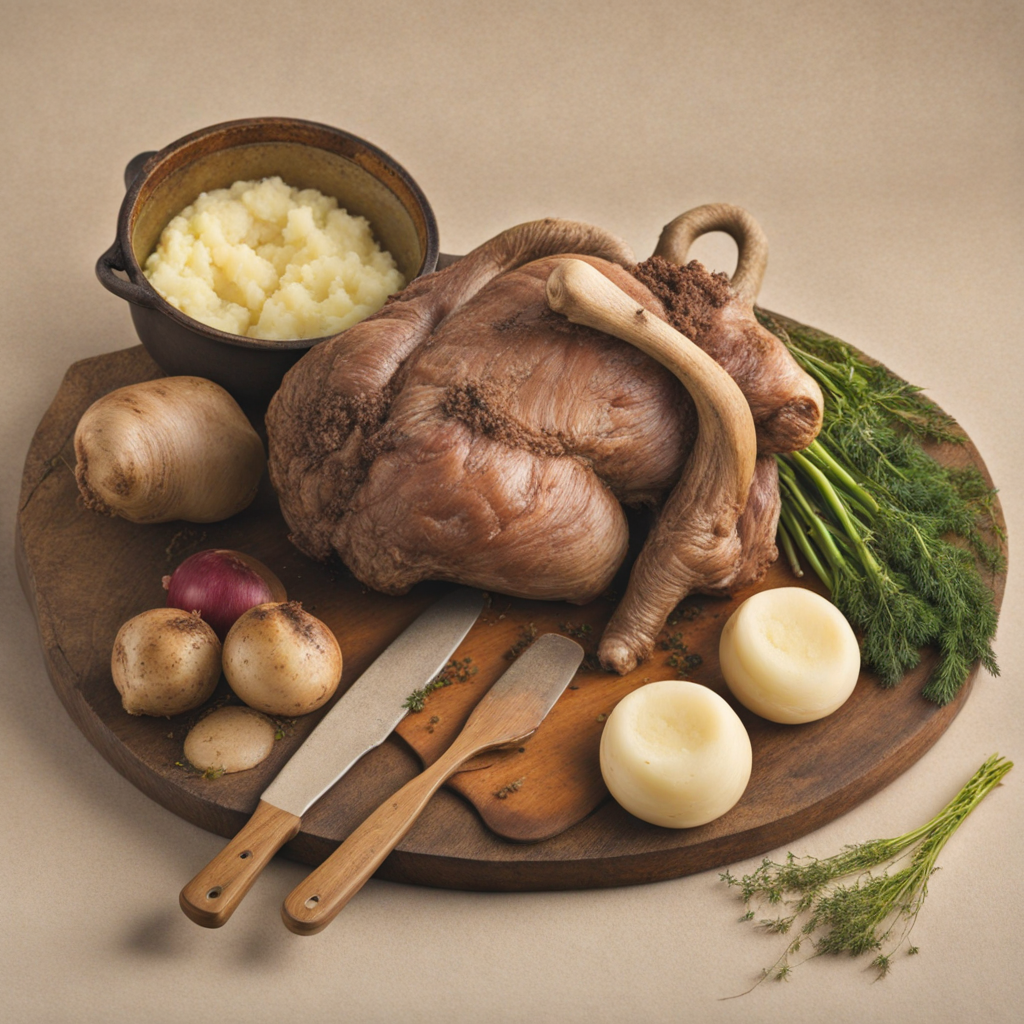Harðfiskur
Harðfiskur, a traditional Icelandic delicacy, is a type of dried fish that has been a staple of Icelandic cuisine for centuries. This unique snack has its roots in the nation’s history of fishing and preservation methods, where the harsh climate and limited access to fresh produce necessitated the development of durable food sources. The practice of drying fish can be traced back to the Vikings, who relied on this method to sustain themselves during long sea voyages and to ensure their survival through long winters. The preparation of harðfiskur is a meticulous process that reflects the simplicity and resourcefulness of Icelandic culture. Typically, the fish used for this delicacy is cod, haddock, or other white fish that are abundant in Icelandic waters. The fish is first cleaned and filleted, then laid out to dry in the open air, often hung on wooden racks. This drying process can take several days to weeks, depending on the weather conditions. The cold, dry winds of the Icelandic landscape, combined with the low humidity, create the perfect environment for drying fish, resulting in a product that retains its nutrients while achieving a distinct texture. In terms of flavor, harðfiskur is quite unique. The drying process intensifies the natural taste of the fish, resulting in a concentrated umami flavor that is both savory and slightly salty. The texture is remarkably firm and chewy, making it a satisfying snack. While some may find the taste to be strong, it is often
How It Became This Dish
Origin of Harðfiskur Harðfiskur, or "hard fish," is a traditional Icelandic delicacy that has its roots deeply embedded in the survival strategies of the Icelandic people. The origins of harðfiskur can be traced back to the Viking Age, around the 9th century, when Iceland was first settled. The harsh climate and rocky terrain made agriculture challenging, prompting early Icelanders to rely heavily on fishing as a primary source of sustenance. The process of making harðfiskur involves drying fish, typically cod or haddock, in the open air. This method of preservation was essential for providing a reliable food source during the long, harsh winters and periods of food scarcity. By dehydrating fish, the Icelanders could store it for months without the risk of spoilage, an invaluable asset in a time when fresh food was limited. Cultural Significance Harðfiskur is more than just a food item; it holds a significant place in Icelandic culture and identity. It is often associated with the resilience and resourcefulness of the Icelandic people. The practice of consuming harðfiskur has persisted through generations, making it a symbol of traditional Icelandic cuisine. Typically enjoyed as a snack, harðfiskur is often accompanied by butter, which enhances its flavor and provides a rich contrast to the fish's natural saltiness. The simple act of sharing harðfiskur among family and friends fosters a sense of community, as it is commonly served during gatherings and special occasions. This tradition emphasizes the importance of togetherness in Icelandic culture, as food is often a focal point for social interaction. Development Over Time As Iceland transitioned through various historical epochs, the production and consumption of harðfiskur evolved. In the early 20th century, the introduction of modern fishing techniques and preservation methods began to change the landscape of Icelandic fisheries. However, the traditional method of making harðfiskur remained cherished. Post-World War II, with the rise of globalization and the expansion of the fishing industry, harðfiskur gained prominence beyond Iceland's shores. It began to be exported, allowing people from other countries to experience this unique Icelandic delicacy. The increased availability brought new attention to harðfiskur, sparking interest from food enthusiasts and travelers seeking authentic culinary experiences. Modern Consumption In contemporary Iceland, harðfiskur is still widely consumed and celebrated. It is commonly found in grocery stores, specialty shops, and markets. The product is often packaged attractively for tourists, showcasing its importance not only as a traditional food but also as a part of Iceland's unique gastronomy. In recent years, there has been a growing trend towards health-conscious eating, and harðfiskur fits seamlessly into this narrative. High in protein and low in fat, it has become a favored snack for those seeking nutritious options. Additionally, with the rise of the "clean eating" movement, harðfiskur is lauded for its simple ingredients and lack of preservatives, aligning well with modern dietary preferences. Regional Variations While cod and haddock are the most commonly used fish for making harðfiskur, regional variations exist based on local fishing practices and cultural influences. In some coastal communities, other types of fish, such as mackerel or even flatfish, may be incorporated into the drying process. These variations reflect the diverse marine life surrounding Iceland and the adaptability of its people in utilizing available resources. Moreover, the methods of drying can also differ, with some individuals favoring a longer drying period for a more intense flavor, while others prefer a slightly shorter time to retain a more tender texture. This flexibility allows for personal preferences to shape the final product, making harðfiskur a versatile delicacy that can cater to different tastes. Harðfiskur in Global Context As culinary globalization continues to influence food trends, harðfiskur has found its way into the diets of people beyond Iceland. Food enthusiasts around the world are increasingly seeking out traditional and authentic products, leading to a newfound appreciation for Icelandic cuisine. This global interest has opened doors for Icelandic fishermen and producers to share their heritage and craftsmanship with a wider audience. Restaurants and gourmet shops outside of Iceland have started to incorporate harðfiskur into their menus, often pairing it with artisan breads, cheeses, or local beers. This fusion of Icelandic tradition with contemporary culinary practices has helped to elevate harðfiskur’s status, transforming it into a sought-after delicacy that appeals to international palates. Conclusion of Tradition and Innovation In conclusion, harðfiskur is a remarkable example of how food can serve as a bridge between the past and present. Its origins are steeped in necessity, shaped by the rugged Icelandic landscape and the resourcefulness of its people. Over the centuries, it has evolved into a cherished cultural symbol, reflecting the resilience of Icelandic traditions while adapting to modern tastes and global influences. The continued popularity of harðfiskur today speaks to its enduring significance in Icelandic identity, as well as its appeal to a broader audience. As the world becomes increasingly interconnected, the journey of this humble dried fish serves as a reminder of the deep-rooted connections between food, culture, and community, ensuring that harðfiskur remains a beloved staple for generations to come.
You may like
Discover local flavors from Iceland







